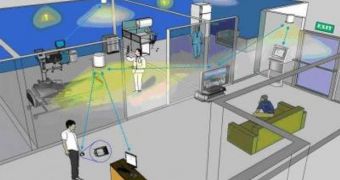Scientists at the University of California in Riverside (UCR) are about to engage in a long-term, five-year effort, to begin in 2010, that will aim to drastically reshape the way in which we communicate and navigate in homes, offices, airports and especially in places where radio frequency communication is prohibited, such as hospitals, and airports. Experts at UCR envision a world in which everything is connected through visible light coming from LEDs. In other words, if you can see light, you have wireless connection to the Internet, mobile phone networks and other such instruments.
“PDAs, HDTV, information kiosks, computers and laptops all can be interconnected wirelessly through visible light,” explains UCR Bourns College of Engineering professor of electrical engineering Zhengyuan Xu. He is also the director of the newly-founded Center for Ubiquitous Communication by Light (UC-Light), and the principal investigator of the $3.5-million project. The initiative is funded through the Multicampus Research Program and Initiatives (MRPI) competition, held each year inside the University of California system.
According to the experts, the work will be a collaborative one, and colleagues from UC Riverside, UC Berkeley, UC Davis, UC Merced and the Lawrence Berkeley National Laboratory (Berkeley Lab) will also be involved. “With a proper data interface to a wired data network such as Ethernet, they make it possible to build very low-cost communication and navigation systems on existing lighting infrastructure,” Xu reveals. “The visible light spectrum is several orders of magnitude larger than the crowded radiofrequency (RF) spectrum, and thus has huge potential for low cost and high data rate communication.”
If a proper technology is set in place that would be able to make use of LED-emitted visible light for wireless data transmission, then the tens of meters of wires that currently exist in each household, or in conference rooms, could soon be a thing of the past. Communication would take place easier, and over a larger number of channels, and the RF electronics interference hazard in airplanes and hospitals could become history.

 14 DAY TRIAL //
14 DAY TRIAL //